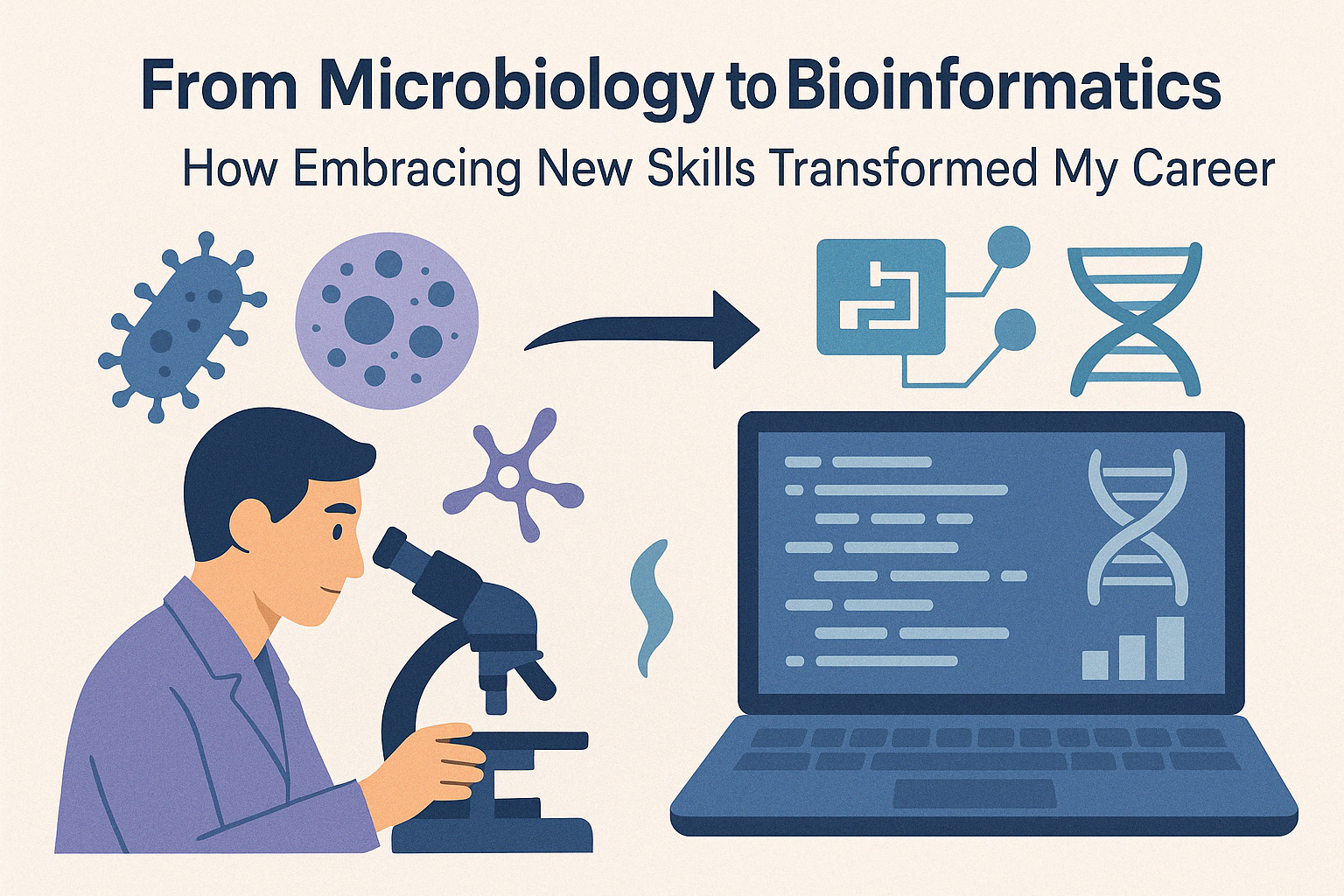From Microbiology to Bioinformatics: How Embracing New Skills Transformed My Career

Introduction
Have you ever considered how embracing a new skill set could transform your career?
Transitioning from one field to another can be daunting, but it’s also an incredible opportunity to reinvent yourself and explore uncharted territory.
For me, the journey from microbiology to bioinformatics has been profoundly transformative, teaching me the power of blending experimental and computational sciences to tackle complex biological challenges.
From Microbiology to Bioinformatics: A Natural Evolution
My career began with a PhD in Food Science, focusing on the genomic and phenotypic adaptation of Lactobacillus reuteri in fermented foods like sourdough. Early on, I was captivated by how microorganisms influence health and nutrition.
This fascination deepened during my PhD, where collaborative comparative genomics projects highlighted the transformative role of bioinformatics in modern research. These experiences sowed the seeds for my eventual shift to computational biology.
Embracing Change: The Catalyst for My Transition
A career break for family care and the constraints of the pandemic pushed me to re-evaluate my professional goals. These circumstances highlighted the growing importance of bioinformatics skills, motivating me to embrace this field fully.
The transition felt daunting, but it also presented an exciting opportunity to expand my expertise and tackle new challenges.
Building Skills Through a Structured Approach
To bridge the gap, I followed a three-step learning process that I still recommend:
1️⃣ Build the Basics: I used platforms like Coursera and DataCamp to gain foundational knowledge in R programming and machine learning.
2️⃣ Practice Through Projects: Guided mini-projects allowed me to apply my skills to real-world problems.
3️⃣ Real-World Applications: Working on clinical and microbiome datasets helped me tackle unstructured challenges while honing my programming expertise.
These steps empowered me to work in areas like microbial genomics, software development for metabolomics, and statistical modeling of complex datasets.
Bridging Disciplines: Where the Magic Happens
What distinguishes my journey is the ability to bridge microbiology and bioinformatics.
My background in experimental microbiology allows me to understand raw data, such as sequencing or qPCR outputs, while my computational skills enable me to derive actionable insights.
This interdisciplinary approach has been pivotal in interpreting infant microbiome data and tackling complex research questions.
Lessons Learned and Advice for Aspiring Bioinformaticians
Transitioning to a new field requires resilience and adaptability. Here are my key lessons from this journey:
🔑 Start small and maintain consistency in your learning.
🔑 Utilize online resources and workshops to gain practical skills.
🔑 Embrace your unique background as a strength; diversity in expertise drives innovation.
For anyone interested in bioinformatics, this is an exciting time. Regardless of whether you come from a biological, statistical, or computational background, your skills are valuable.
The key is to embrace continuous learning and foster interdisciplinary collaboration.
What About You?
Have you ever transitioned to a new field? How did you overcome challenges and embrace new opportunities?
I’d love to hear about your journey—please share your experiences in the comments!